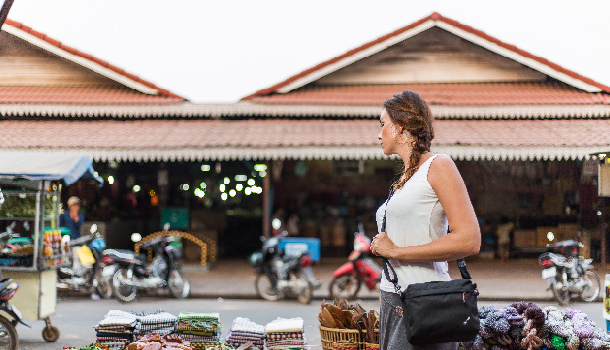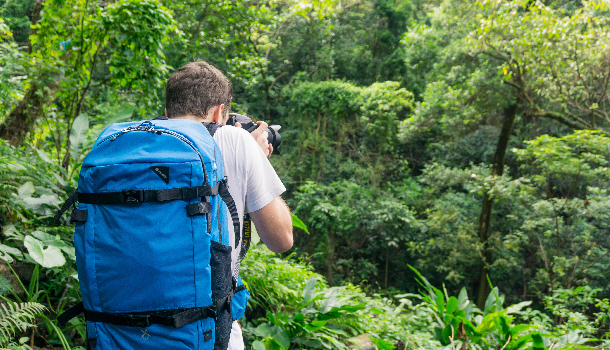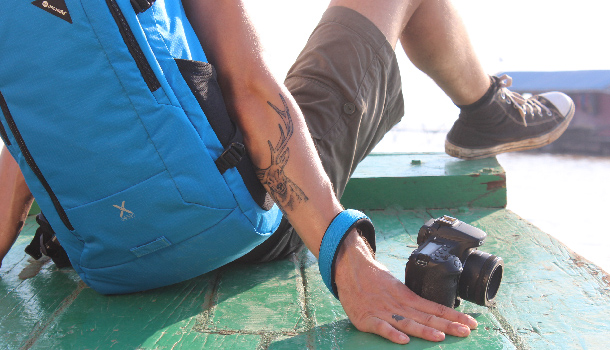Click to sign up for 10% off your first order. | Free Shipping to US & Canada for orders over USD 49. T&Cs apply
Click to sign up for 10% off your first order. | Free Shipping to US & Canada for orders over USD 49. T&Cs apply
September 01, 2016 3 min read

Travelling while photographing is never easy. You have to take good care of yourcamera equipment, look for interesting photography subjects and keep track of your luggage all at the same time. Find out what may harm yourcamera gear when you travel and how to prevent it from happening.

Start with the basics by getting to know the limitations of your camera gear. Check the user manual to see how well your camera is sealed. Entry levelDSLR camerashave very limited protection when it comes to sealing off all the openings such as the screen, camera body and buttons, making them susceptible to hot and cold weather.
For high-end professional camera models, they’re often weather-proof, making them a better choice for travel. Expensive camera gear can be sensitive to high temperature and impact, so make sure you check the specifications.
If you predict that you’ll be experiencing extreme temperature changes and impact, then bring a camera suited for those conditions. Choose a camera made for travel such as the Olympus TG-3 or Panasonic Lumix DMC-GX8
. Both of these cameras are small, easy to carry and recommended byNational Geographic photographers for travel.

If you plan to go to the beach, don’t leave thedigital camera under the sun for a long time because the heat can damage the camera casing and LCD screen, especially since the camera body is usually black and absorbs heat easily. Clean the camera gear carefully after going to the beach since sand and other debris can get trapped in between the buttons and camera body.
Extreme changes in temperature can cause condensation in the camera lenses. Exiting an air conditioned room or leaving an air conditioned car are some of the common ways that condensation may fog up your lenses. Reduce condensation by carrying the camera in an insulated bag (such as a lunch bag) or acamera bagto provide bettercamera protection.
Camera equipmentscan be damaged or affected by moisture. Humid and watery environments encourage the growth of fungus on the lenses, and it’ll cost time and money to have them cleaned.
To prevent moisture in your camera bags, prepare bags containing reactive silica gel (also known as indicative silica gel) to store yourcamera lensesand other gears sensitive to moisture. These will absorb the moisture in the air and keep yourcamera geardry. They can also berechargedafter they absorb moisture, so you can reuse them. But, be careful – the dust from the silica gel is poisonous, so make sure not to inhale them.
If you have to take photos in the rain, use a rain jacket or lens hood to reduce the raindrops falling on your digital camera. Not only does the lens hood keep your lense away from the rain droplets, it also protects your lenses from scratches and impact. The best lens hoods are the ones that fit your lenses, have the right focal length and don’t obstruct your view. Check out your manual for the size of the thread and shop by brand to find the right one for your camera lens.

Around the city, in transit or on locations such as forests or beaches, your camera can get caught on objects, snatched or dropped on the floor. Get ready for bumpy rides and grabby tree branches withPacsafe camera bags andPacsafe camera backpacks. They’re durable, made to last through daily use and rough adventures.
The best compactcamera bag for travel is theCamsafe LX4 anti-theft compact camera bag because it has easy and intuitive security features like the Lockabout™ security and smart zipper security to prevent pickpockets from reaching into your bags. It also has straps lined with stainless steel wire so it won’t break easily when tugged by branches or obstacles.If the space isn’t enough for you, bring the most rugged and versatile backpack that even veteran travellers recommend, the Venturesafe X40 PLUS. It’s built for outdoors and includes a rain cover. The anti-theft features such as smart zipper security and lightweight slashguards keep your gears secure. Plus, it’s large enough to accommodate both travel gears and camera gears.
To prevent dropping or losing your digital camera, use a stylishcamera wrist strap. It ensures your camera won’t fall even when the camera slips from your fingers. The soft neoprene wrist loop tightens if your camera is snatched or dropped, preventing it from theft and damage.
Now pick up yourcamera gear and have a worry-free photography trip. Explore further with the right camera gear and knowledge. Do share with us if you have more tips to keepcamera equipment in top shape while on the go!
April 07, 2025 5 min read
Be the first to know about upcoming sales and promos. Get a 10% discount coupon when you subscribe!
Be the first to know about Pacsafe
product releases, news and content.